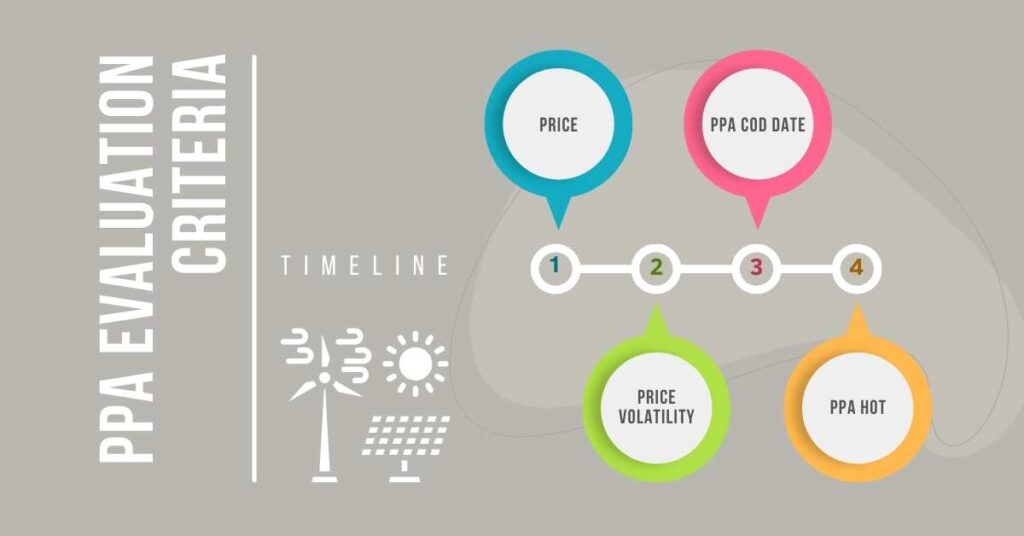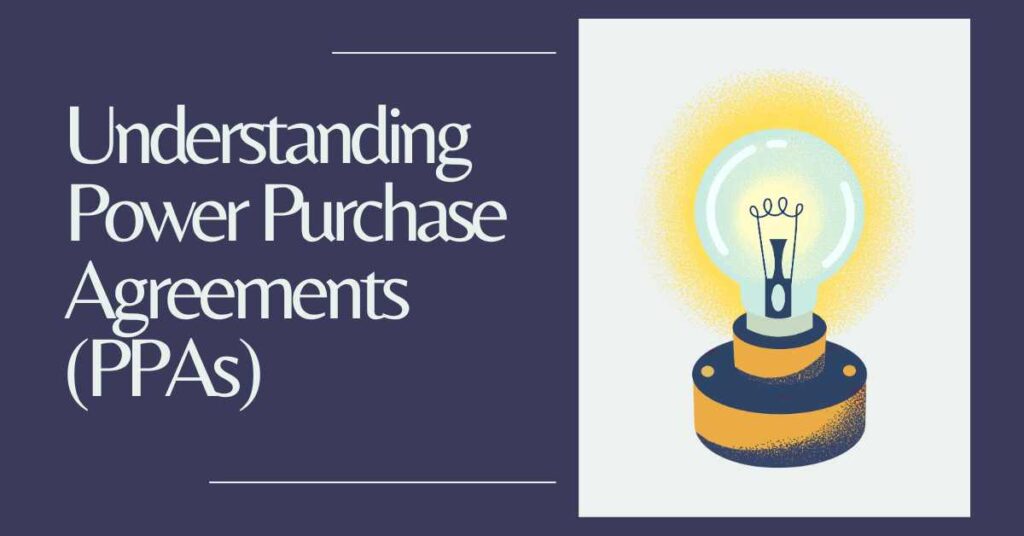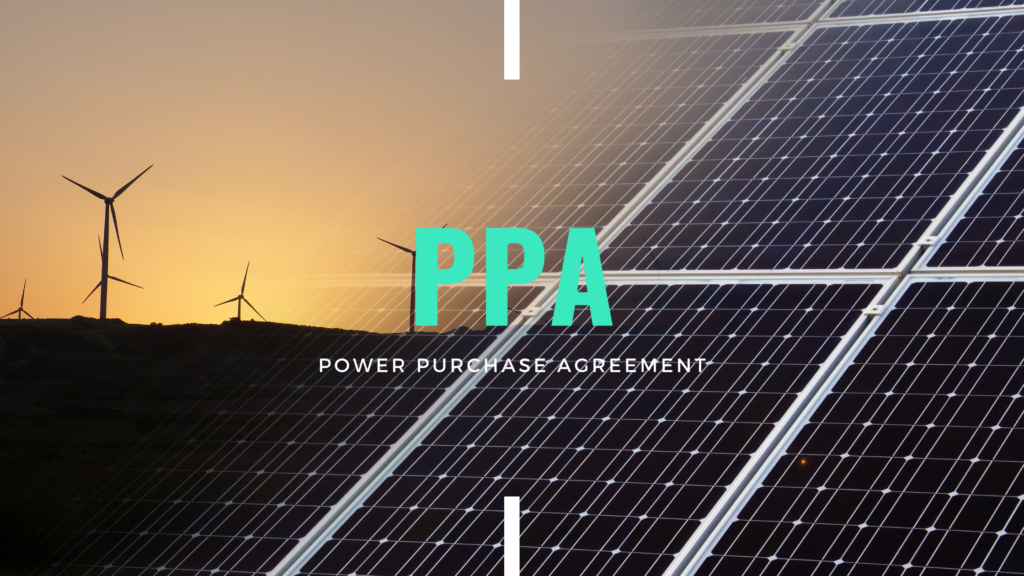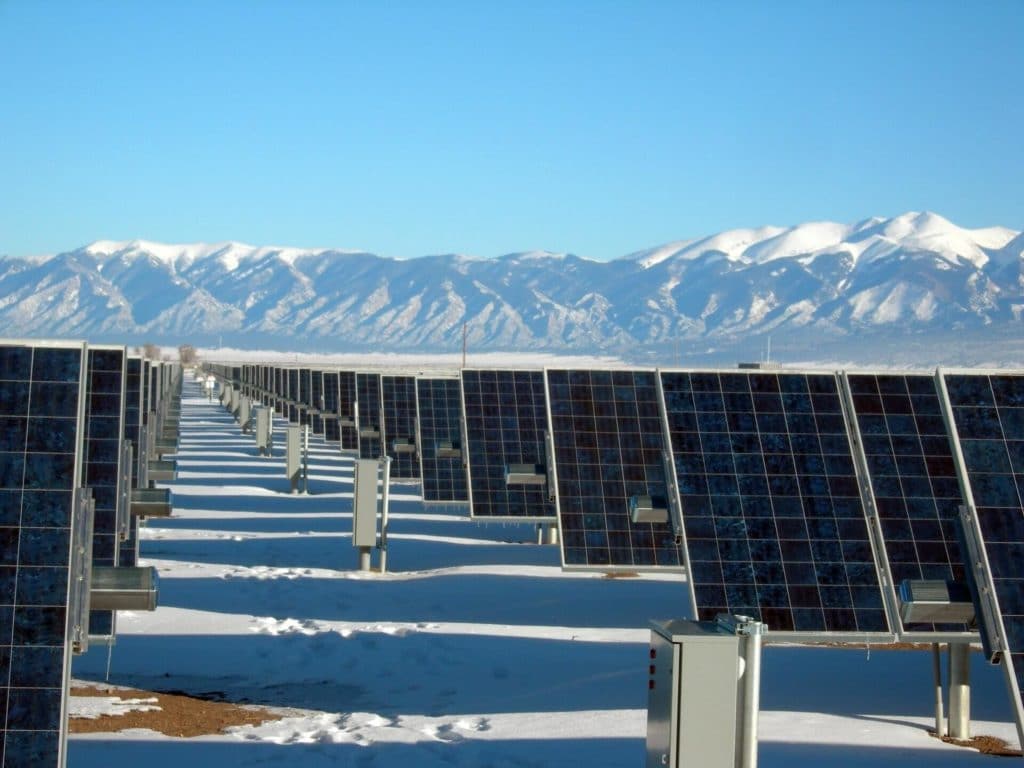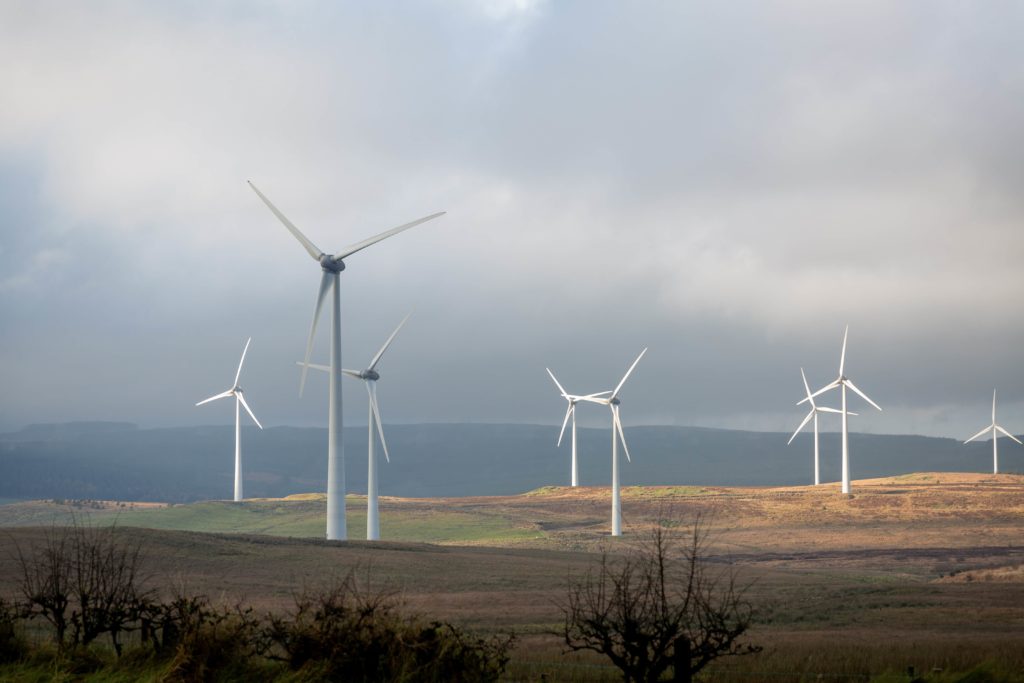Table of Contents
Introduction
The increasing demand for renewable energy sources and the shift towards decarbonisation has led to the growth of Power Purchase Agreements (PPAs). PPAs are long-term contracts between a power producer and a consumer, in which the producer agrees to supply electricity to the consumer at a predetermined price. As more organisations seek to reduce their carbon footprint, many are looking to purchase renewable energy through PPAs. However, choosing the right PPA can be challenging and requires careful evaluation of various criteria.
This article aims to identify best market practices for evaluating and selecting a PPA offer, specifically for organisations looking to sign their renewable energy PPA agreements.
PPA Evaluation Criteria Methodology
First, it is important to note that there is no one-size-fits-all approach to evaluating PPAs. Different organisations have different goals and constraints and therefore require different PPA evaluation criteria.
Ideally, those PPA evaluation criteria would be linked to the organisation’s energy risk management and procurement policy and aligned with the company’s management objectives. The management’s objectives can have a different risk tolerance and depending on this risk tolerance and what the company aim to achieve, the PPA evaluation criteria would be determined.

With that said, there are some best practices that can guide organisations in their evaluation process. One of such criterion must be the PPA NPV, as it can significantly impact the financial performance of the organisation. Additionally, organisations should evaluate the reliability and creditworthiness of the counterparty, as well as the contract length and flexibility, to ensure that the agreement aligns with their long-term goals.
Let us review the most important criteria for evaluating PPAs, as well as insights into the challenges and opportunities of entering into a PPA agreement.
| PPA evaluation criteria | Definition | Expected Outcome | Why is it important? |
| PPA NPV | The NPV criteria is used to evaluate the financial attractiveness of a PPA offer vs forward market curves. The NPV is the sum of the present values of cashflows over PPA contract lifetime, discounted to the present time and then compare vs a nonPPA energy approach | > 0 | The PPA NPV criteria is important because it provides a measure of the financial attractiveness of a PPA deal. A positive NPV indicates that the project will deliver savings vs no PPA conventional approach. |
| PPA COD Date | PPA COD (Commercial Operation Date) refers to the date when a renewable energy project is completed, and commercial operation begins, generating electricity to sell under a Power Purchase Agreement (PPA). | Typically, the earlier, the better | An early PPA COD date is crucial because it allows the company to start achieving its sustainability goals sooner and often lower the price of its electricity bill and as a result achieve savings. An early COD date also mitigates the risks associated with construction delays, which can impact the project’s timeline and increase costs. |
| PPA Maximum Exposure | The criteria is similar to the NPV approach with an only difference that the NPV delta between PPA and non PPA energy approach is compared in the low case market price forecast scenario. This scenario is based on a set of assumptions that may include factors such as decreased demand for electricity, increased renewable energy production, or an economic recession etc. | Low case delta NPV < High case delta NPV | It is important to stress test your business case assumptions against the worst-case market price forecast conditions because it helps identify the potential risks and uncertainties associated with a project. The stress testing enables companies to evaluate their business case assumptions against a range of possible outcomes and to identify any weaknesses in the assumptions made. |
| PPA Additionality | The renewable energy project would not have been built without the company’s PPA commitment. | New Built asset and FiD date not yet materialized | The importance of PPA Additionality lies in ensuring that companies’ renewable energy purchases are actually leading to additional renewable energy being generated and that they are not simply purchasing existing renewable energy that would have been generated anyway. |
| Assessing PPA HoT | PPA Heads of Terms (HoT) is a document that sets out the terms of a commercial transaction agreed in principle between parties in the course of negotiations of a Power Purchase Agreement. The main objective of HoT is to have a written confirmation of the main terms agreed in principle as well as to outline a timeline and obligations between the parties. | There are several important clauses that organisations need to pay attention to. They may include Force Majeure, Creditworthiness, Termination amount and Liability CAPs, Performance Guarantees. You can learn more about PPA HoT in my article here. | Agreeing on a balance of risks during Power Purchase Agreement (PPA) contract negotiations is important because it ensures that both parties, the buyer and seller, are sharing the risks involved in the project fairly.Therefore, it is important to identify and prioritize risks associated with the project. |
Final Words
PPAs can provide organisations with a reliable and cost-effective source of renewable energy. However, choosing the right PPA requires careful evaluation of various criteria, including price, renewable energy attributes, contract length and flexibility, and creditworthiness of the counterparty. There should be not only quantitative but also qualitative parameters for selecting a PPA.
Organisations can make informed decisions when selecting a PPA by evaluating various criteria such as price, contract length, renewable energy attributes, and counterparty creditworthiness.
I hope this article has provided valuable insights into the best market practices for PPA evaluation. I encourage you to share your thoughts and comments on this topic in the comments section below.
Are you struggling to prepare a Power Purchase Agreement (PPA) evaluation model or establish PPA selection criteria for your company? We have extensive knowledge and expertise in the field of PPAs. If you need help with the preparation of a PPA evaluation model or establishing PPA selection criteria for your company, don’t hesitate to reach out to us via the contact form on this website. We are here to help you achieve your energy goals and make informed decisions about your PPA agreements. Let’s work together to create a sustainable future for your organization!
If you want to stay up-to-date on the latest developments in the renewable energy industry, including news and insights on PPAs, I invite you to subscribe to our newsletter. Our newsletter provides subscribers with valuable information and insights on sustainability, energy, and other related topics. Thank you for reading and have a great day!
For those interested in delving deeper into the procurement of renewable electricity through Power Purchase Agreements, there’s a comprehensive book available for further exploration of the topic.


